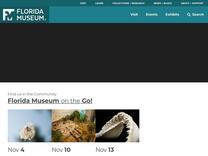Atlantic Spadefish – Discover Fishes https://www.floridamuseum.ufl.edu/discover-fish/species-profiles/atlantic-spadefish/
Chaetodipterus faber This silver and black striped, disk-shaped fish schools in groups as large as 500. Although it’s the only of its family to live in the Western Atlantic, there are a few fish that look similar. The Atlantic spadefish can grow to almost 36 inches and 20 pounds. Some anglers lik
This fish may also feed occasionally on plankton as well as nibble on jellyfish tentacles

